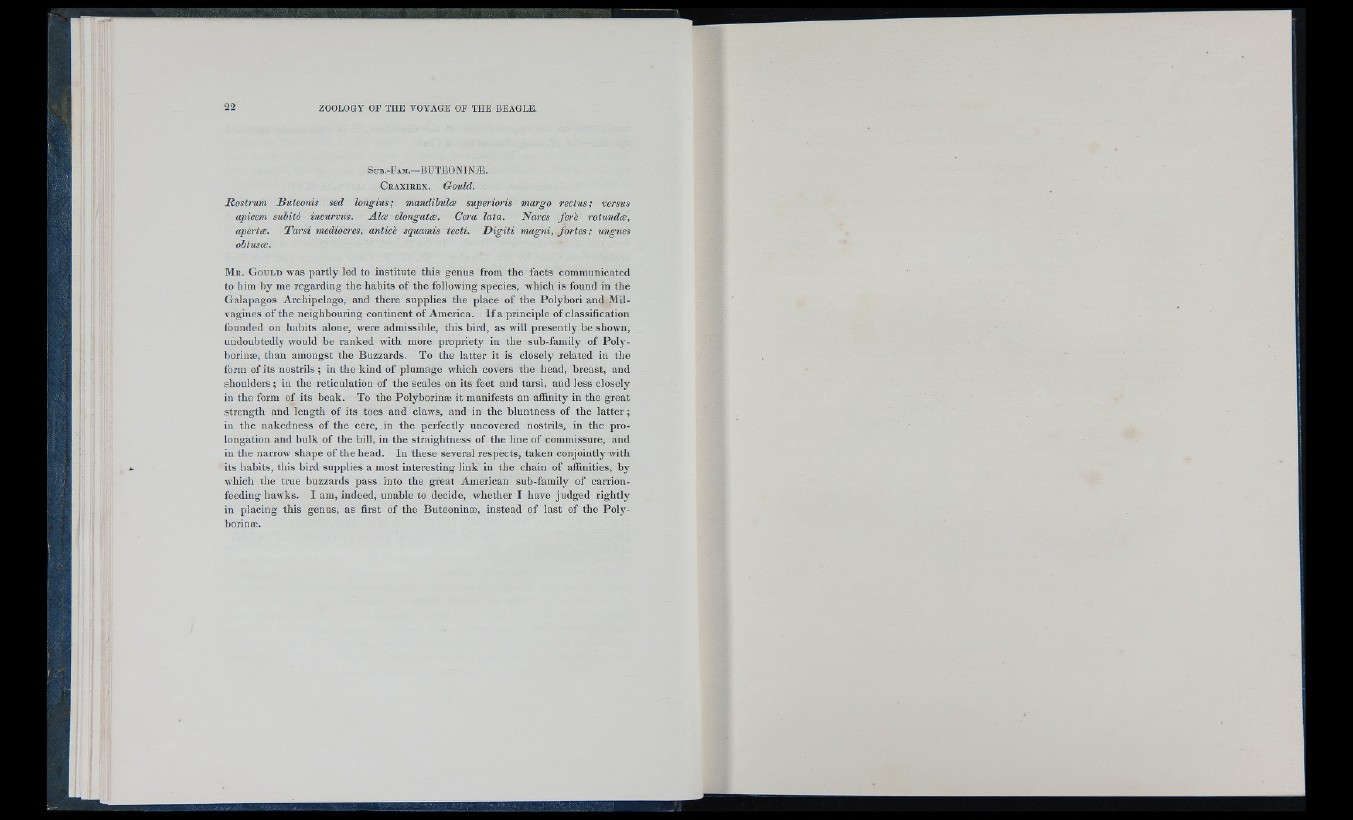
S u b .-F am.— B Ü T E O N IN Æ .
C r a x i r e x . Gould.
Rostrum Byiteonis sed longius; mandihuJoe superioris margo rectus; versus
apicem Siibitd incurvus. Aloe elongatæ. Cera lata. Nares ferè roiundoe,
apertæ. Tarsi médiocres, anticè squamis tecti. D ig iti magni, fortes ; ungues
obtusoe.
M r . G o u l u was partly led to institute this genus from the facts communicated
to him by me regarding the habits of the following species, which is found in the
Galapagos Archipelago, and there supplies the place of the Polybori and Mil-
vagines of the neighbouring continent of America. I f a principle of classification
founded on habits alone, were admissible, this bird, as will presently be shown,
undoubtedly would be ranked with more propriety in the sub-family of Polyborinæ,
than amongst the Buzzards. To the latter it is closely related in the
form of its nostrils ; in the kind of plumage which covers the head, breast, and
shoulders ; in the reticulation of the scales on its feet and tarsi, and less closely
in the form of its beak. To the Polyborinæ it manifests an affinity in the great
strength and length of its toes and claws, and in the bluntness of the latter ;
in the nakedness of the cere, in the perfectly uncovered nostrils, in the prolongation
and bulk of the bill, in the straightness of the line of commissure, and
in the narrow shape of the head. In these several respects, taken conjointly with
its habits, this bird supplies a most interesting link in the chain of affinities, by
which the true buzzards pass into the great American sub-family of carrion-
feeding hawks. I am, indeed, unable to decide, whether I have judged rightly
in placing this genus, as first of the Buteoninæ, instead of last of the Polyborinæ.